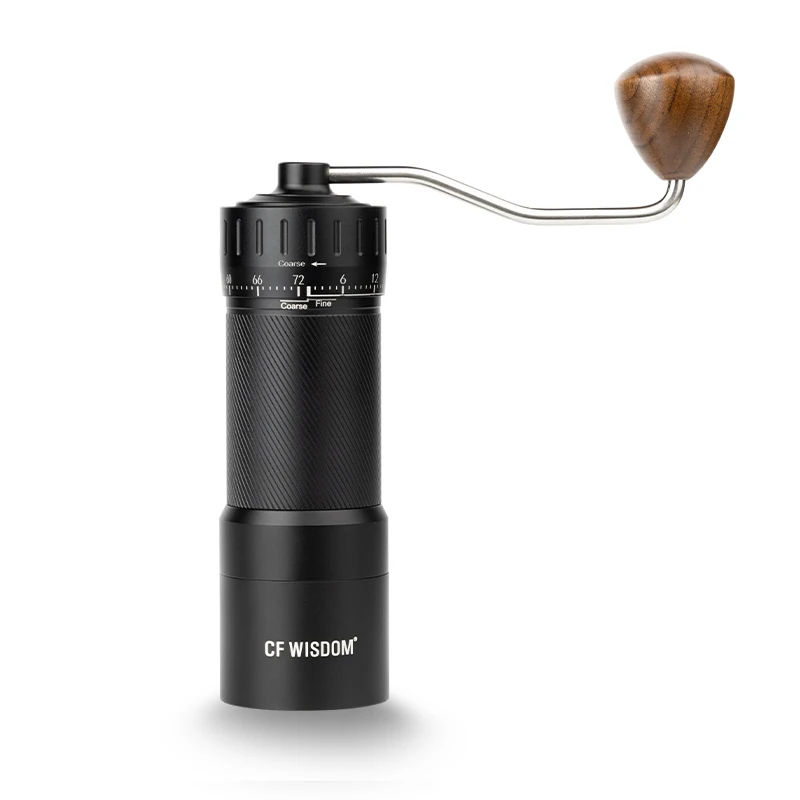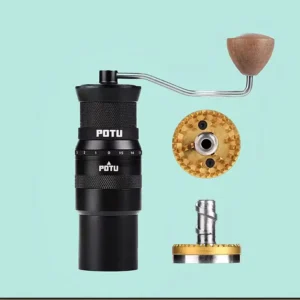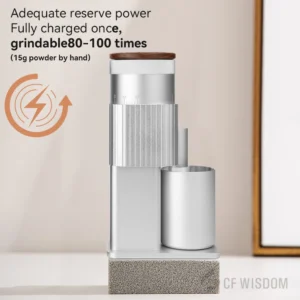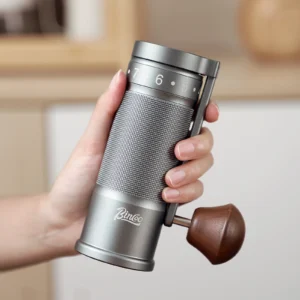Introduction: The Foundation of Espresso Excellence
When it comes to crafting the perfect espresso, no single factor has more impact on your final cup than grind size. This seemingly simple variable is actually the cornerstone of espresso extraction, influencing everything from flavor and aroma to body and crema. While many enthusiasts focus on fancy machines or premium beans, the truth is that even the most expensive equipment can’t compensate for an improper grind.
The relationship between grind size and espresso quality is direct and profound. Each time you adjust your grinder, you’re changing how water interacts with coffee particles under pressure, which fundamentally transforms your shot. Too fine a grind can lead to bitter, over-extracted coffee that chokes your machine, while too coarse a setting results in watery, sour shots that flow too quickly.
Understanding and controlling your mastering espresso precision grind settings is what separates disappointing shots from truly exceptional espresso. In this guide, we’ll explore the science behind why grind size matters, examine what happens when your grind is off, walk through the process of finding the perfect setting, and provide practical troubleshooting tips to elevate your espresso game.
The Science Behind Grind Size and Espresso Extraction
Understanding espresso extraction requires thinking about surface area. When you grind coffee beans, you’re increasing the surface area exposed to water. The finer the grind, the more surface area is created, which means more points of contact between water and coffee particles.
This increased surface area directly impacts how compounds are extracted from coffee:
- Fine grind: More surface area means faster extraction of compounds
- Coarse grind: Less surface area results in slower extraction
However, espresso isn’t just about surface area. Since espresso machines use approximately 9 bars of pressure to force water through coffee, grind size creates resistance against this pressurized water. This resistance determines:
- How long water remains in contact with coffee (contact time)
- How evenly water flows through the coffee puck
- Which compounds get extracted and in what quantities
The perfect espresso extraction typically extracts 18-22% of the coffee’s soluble compounds. This “Goldilocks zone” is where balanced flavors emerge—not too little (under-extraction) and not too much (over-extraction).
For a visual reference of exactly what your grind should look like at different settings, our ultimate espresso grind size chart provides detailed comparisons that can help you identify where your grind stands.
When Your Grind is Too Fine: Over-Extraction Problems
When your espresso grind is too fine, water struggles to flow through the densely packed coffee bed, leading to over-extraction. This creates several noticeable issues:
Visual indicators:
– Extremely slow extraction (drops rather than a steady stream)
– Shot takes longer than 35-40 seconds for a standard double
– Very dark, almost black espresso
– Blotchy, patchy crema with dark spots
Taste characteristics:
– Overwhelming bitterness
– Astringent, dry mouthfeel
– Hollow, empty flavor profile lacking sweetness
– Burnt, ashy, or medicinal notes
Mechanical issues:
– Machine struggles and makes straining sounds
– Pressure may build to unsafe levels
– Higher likelihood of channeling as water forces its way through weak points
The physics behind these problems is straightforward: when water can’t flow evenly through the puck, it creates channels where it extracts too much from some areas while barely touching others. This uneven extraction pulls out excessive bitter compounds and tannic acids.
Examining your used puck can provide clues—look for channels (worm-like holes) or an overly compacted, shiny surface, both indicating the grind was too fine. Understanding how coffee grind affects pressure flow is essential for diagnosing these extraction problems effectively.
When Your Grind is Too Coarse: Under-Extraction Problems
At the opposite end of the spectrum, a grind that’s too coarse creates an entirely different set of problems centered around under-extraction. Water flows through the coffee bed too quickly without adequate resistance.
Visual indicators:
– Extremely fast “gusher” shots (under 20 seconds)
– Pale, thin crema that dissipates quickly
– Watery appearance with light color
– Uneven extraction with spurting or spraying
Taste characteristics:
– Pronounced sourness or acidity
– Lack of sweetness and depth
– Thin, watery body lacking richness
– Sharp, one-dimensional flavor profile
Mechanical issues:
– Insufficient resistance to build proper brewing pressure
– Water channels through large gaps between particles
– Machine may not reach proper extraction pressure
The fundamental issue here is that water passes through the coffee too quickly to dissolve the balanced range of compounds that create a pleasant espresso. The initial acids extract quickly, but sugars, oils, and other desirable compounds remain trapped in the grounds.
After brewing, your puck will often appear loose, muddy, or even soupy, sometimes breaking apart when removed. The texture is usually soft and lacking cohesion. Mastering perfect espresso grind adjustment begins with recognizing these signs and knowing how to respond appropriately.
Finding the Sweet Spot: Dialing In Your Espresso Grind
Dialing in your espresso grind is both an art and a science, but with practice, you’ll develop an intuitive feel for finding that sweet spot where extraction is balanced and flavors sing in harmony.
Step-by-step dialing in process:
- Start with a generally appropriate espresso setting on your grinder
- Pull a shot using standard parameters (18g in, 36g out)
- Time the shot from first drip to final weight
- Taste the result and note its characteristics
- Make a single adjustment based on time and taste:
– Shot too fast/sour: Adjust finer
– Shot too slow/bitter: Adjust coarser - Repeat the process until you achieve the target parameters:
– 25-30 second extraction time
– 1:2 brew ratio (e.g., 18g coffee yields 36g espresso)
– Proper flow (resembling warm honey or “mouse tails”)
The key to successful dialing in is making methodical, incremental adjustments and changing only one variable at a time. This scientific approach helps isolate the impact of grind size from other factors.
Properly extracted espresso should offer a balanced flavor profile with pleasant acidity, noticeable sweetness, and a smooth finish. The mouthfeel should be rich and velvety, not watery or astringent.
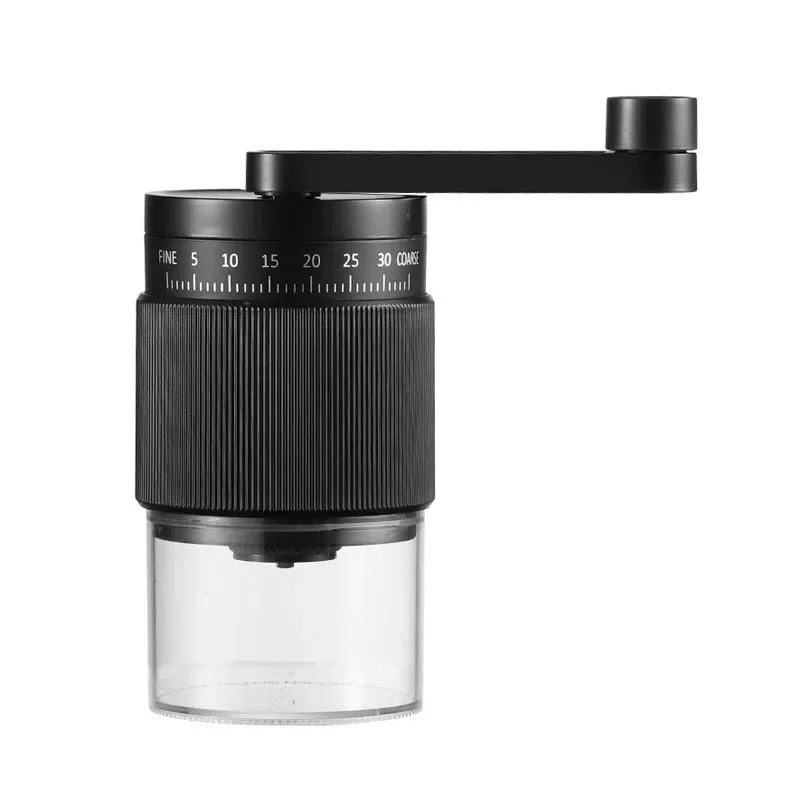
For the micro-adjustments needed in espresso preparation, a fine adjustment hand grinder with precise settings can make a tremendous difference in your ability to nail the perfect extraction.
Key Grinder Considerations for Espresso
Not all coffee grinders are created equal when it comes to espresso preparation. The demands of espresso grinding are particularly stringent, requiring both consistency and the ability to make minute adjustments.
Burr Grinders vs. Blade Grinders:
Blade grinders chop beans randomly, creating particles of widely varying sizes. This inconsistency is disastrous for espresso, leading to simultaneous over- and under-extraction. High-quality manual coffee burr grinders create uniform particles that extract evenly under pressure.
Burr Type Comparison:
| Burr Type | Characteristics | Best For |
|---|---|---|
| Flat Burrs | Very consistent, even particle size | Balanced, “classic” espresso shots |
| Conical Burrs | Slightly wider particle distribution | Fruity, bright, complex espresso |
| Ceramic Burrs | Heat-resistant, durable | Long-term stability, lower RPM grinding |
| Steel Burrs | Very sharp, precise | Maximum consistency, faster grinding |
Grind consistency is paramount because inconsistent particles extract at different rates. When your grounds contain both fine dust and larger chunks, the fines over-extract (adding bitterness) while the larger pieces under-extract (adding sourness).
The ability to make micro-adjustments is equally important. For espresso, sometimes a tiny adjustment of less than a millimeter can transform a mediocre shot into a perfect one. Understanding why burr grinders are essential for espresso helps you appreciate the precision required for consistent results.
Practical Tips for Consistent Grind Adjustment
Maintain consistent dosing – Use a scale to ensure the exact same amount of coffee each time. Changing dose affects resistance and flow, masking the impact of grind adjustments.
Always grind fresh – Coffee begins losing volatile compounds immediately after grinding. For best results, grind immediately before pulling your shot.
Purge after adjustments – When you adjust your grinder finer, some old grounds remain at the previous setting. Run a small amount of beans through to clear these before grinding your actual dose.
Make incremental changes – Especially when fine-tuning espresso, make very small adjustments. Even a quarter turn can dramatically affect extraction.
Run the grinder while adjusting finer – This prevents bean fragments from jamming between the burrs, which can damage your grinder.
Examine your puck after extraction – A properly extracted puck should be firm, intact, and relatively dry. It should knock out as a single cohesive disk.
Keep your grinder clean – Regularly remove oil buildup from burrs and chambers. Stale coffee oils affect taste and can make grind size inconsistent.

A precision manual grinder with clear, repeatable settings makes these adjustments significantly more manageable and helps you maintain consistency from shot to shot.
Fine Adjustment Hand Grinder, Precision Manual Grinder, Travel Coffee Grinder
Price range: $185.11 through $494.63 Select options This product has multiple variants. The options may be chosen on the product pageHand Burr Grinder, Hand Crank Coffee Grinder, Manual Espresso Grinder, Portable Coffee Grinder
Price range: $262.72 through $300.22 Select options This product has multiple variants. The options may be chosen on the product pageManual Burr Mill, Manual Coffee Grinder Stainless Steel, Manual Coffee Mill Grinder, Mechanical Coffee Grinder
Price range: $127.26 through $130.32 Select options This product has multiple variants. The options may be chosen on the product pageHand Burr Grinder, Manual Coffee Grinder Stainless Steel, Precision Manual Grinder
Price range: $183.64 through $187.52 Select options This product has multiple variants. The options may be chosen on the product page
Beyond Grind Size: Interacting Variables
While grind size is foundational, it doesn’t exist in isolation. Several other variables interact with grind size to determine your final espresso quality:
Dose (Coffee Amount):
Increasing your dose while maintaining the same grind size increases resistance and slows flow. If you adjust your dose up, you may need to grind slightly coarser to maintain balance.
Tamping Pressure:
While consistency matters more than exact pressure, tamping harder effectively makes your grind act finer by increasing density and reducing flow rate.
Distribution Technique:
Even if your grind size is perfect, poor distribution creates channels where water flows too quickly, bypassing much of the coffee and causing uneven extraction.
Water Temperature:
Hotter water extracts more quickly. If your machine runs particularly hot, you might need a slightly coarser grind to prevent over-extraction.
Coffee Bean Characteristics:
Different beans require different grinds:
– Light roasts generally need a finer grind (they’re denser and harder to extract)
– Dark roasts typically need a coarser grind (they’re more porous and extract easily)
– Fresh beans often need a coarser grind than older beans
Understanding espresso grind size for light and dark roasts helps you adapt your approach based on the specific coffee you’re using.
Troubleshooting Common Espresso Problems Through Grind Adjustment
Problem: My espresso tastes sour and sharp
Solution: Your grind is too coarse, causing under-extraction. Adjust your grind finer to increase extraction time and allow more flavors to dissolve. Aim for a shot that takes 25-30 seconds rather than 15-20 seconds.
Problem: My espresso tastes bitter and harsh
Solution: Your grind is too fine, causing over-extraction. Adjust your grind coarser to reduce extraction time and prevent harsh compounds from dissolving. Look for a smoother flow rather than slow drips.
Problem: My shots pull too quickly (under 20 seconds)
Solution: Adjust your grind finer in small increments until you reach the 25-30 second range for a standard double. If a very fine grind still pulls too fast, check for channeling or improper tamping.
Problem: My machine chokes or shots take over 35 seconds
Solution: Your grind is too fine. Adjust coarser until flow normalizes within the 25-30 second target range. Ensure you’re not tamping excessively hard, which compounds the problem.
Problem: My shots are inconsistent from one to the next
Solution: Focus on grinder quality and technique consistency. Ensure your manual espresso grinder produces consistent results, and that you’re distributing grounds evenly before tamping.
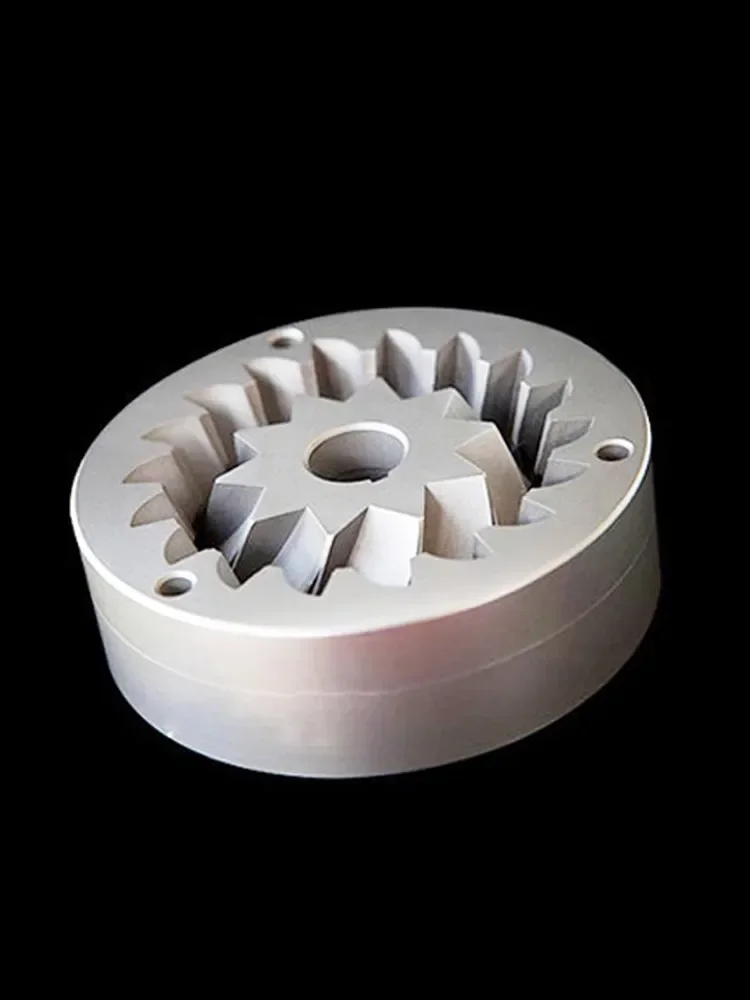
FAQs: Common Questions About Espresso Grind Size
Do I need a special grinder for espresso?
Yes. Espresso requires a grinder capable of producing a very fine, consistent grind with precise adjustment capabilities. Standard coffee grinders often can’t grind fine enough or make small enough adjustments for proper espresso extraction. Investing in a quality manual coffee grinder for espresso is essential for consistent results.
How often should I adjust my grind size?
You’ll need to adjust grind size when changing coffee beans, when beans age, when ambient humidity changes significantly, and occasionally when your machine’s performance changes. Some baristas make minor adjustments daily to maintain optimal extraction.
Can I use pre-ground coffee for espresso?
While possible in an emergency, pre-ground coffee presents major challenges for espresso. It’s rarely ground to the precise size needed for your specific machine and setup, and it stales rapidly after grinding. For quality espresso, grinding fresh is essential.
Does grind size matter more for certain coffees?
Light roasted coffees are particularly sensitive to grind size as they’re denser and harder to extract. Single-origin beans often require more precise grinding than blends due to their distinctive characteristics. Finding the correct grind setting for espresso often requires more care with specialty beans.
How can I tell if my grinder is consistent enough?
Examine your ground coffee under good lighting. It should appear uniform without obvious large chunks or fine powder. More precisely, your shots should extract consistently when all other variables are controlled. If timing and appearance vary widely between shots using the same grind setting, your grinder may lack consistency.
Conclusion and Next Steps on Your Espresso Journey
Grind size truly is the foundation of exceptional espresso. As we’ve explored, this single variable influences extraction rate, flow resistance, flavor development, and ultimately, the quality of your shot. Mastering the relationship between grind size and espresso extraction opens the door to consistently delicious results.
Remember that finding your perfect grind is an ongoing process rather than a one-time setting. Each new coffee brings its own characteristics that might require adjustment, and variables like humidity and bean age will continue to influence your ideal grind setting.
Use taste as your ultimate guide. While timing and visual cues are helpful indicators, flavor is the true measure of successful extraction. A properly dialed-in shot should balance acidity, sweetness, and body in a harmonious profile that showcases your coffee’s best qualities.
For those serious about their espresso journey, investing in quality equipment makes a tremendous difference. The precision and consistency offered by high-quality espresso coffee hand grinders provide the foundation needed for exceptional shots, shot after shot.

